#fermented chilies
Explore tagged Tumblr posts
Photo
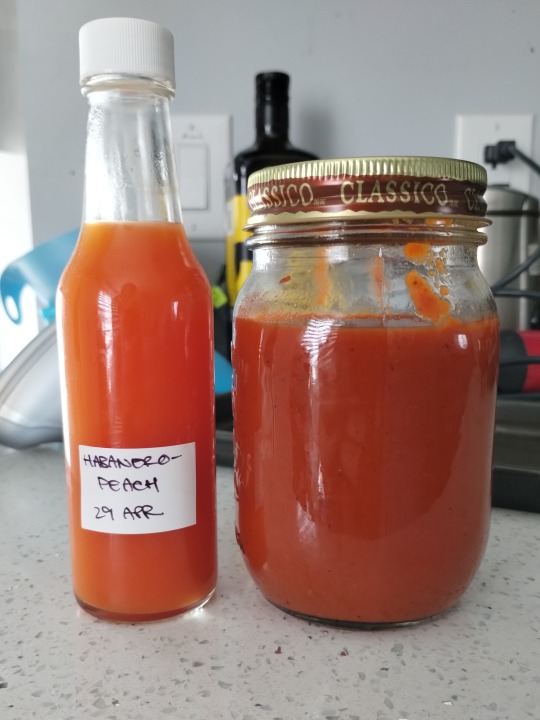
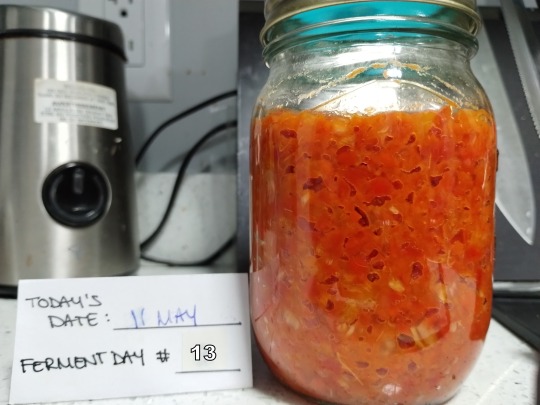
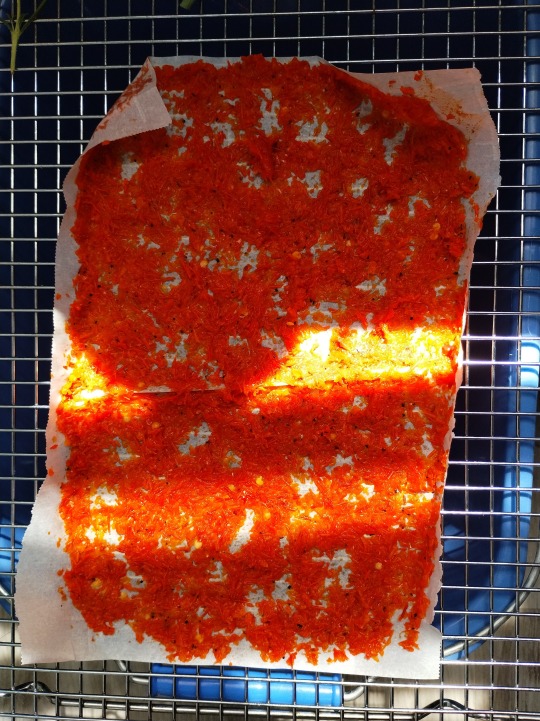
I made a hot sauce!
On 23 Apr, I roughly blended some habaneros, garlic, onion, and some fruit, added salt and a bit of whey, placed a circle of film on the surface, and put an airlock lid on the jar.
The mixture was dense and chunky, and as fermentation got underway, gas bubbles would get trapped, leading to a “spongy” texture.
This was also my first time fermenting fruit this way, and I’m not sure if it was the sugar content or what, but this ferment stank! It smelled like weird cheese.
After a few weeks, I realised the film was ineffective: with all the bubling, the film got jostled around too much, and eventaully I noticed a white growth developing (kahm yeast). I did away with the film entirely, opting to try topping with brine (2-2.5% saline solution).
That wasn’t very effective and the kahm persisted. I switched to using a fermented brine from salsa. Eventually, the additional liquid mixed with the original brine, creating a looser texture that allowed the gas bubbles to escape to the top. But I can no longer tell you exactly what’s in this hot sauce.
We’ve had a streak of hot weather here, and I’ve been struggling to keep my ferments cool; so there’s been a lot of kahm yeast development. On 1 Jun, I finally decided it was time to finish this hot sauce.
I strained out the liquid, which produced a very thin and spicy hot sauce (like 9/10 for me).
The solids, I continued processing, adding more fruit and mild red peppers to reduce the heat. I also added salt and sugar, then pressed the mixture through a sieve twice. It has the consistency of ketchup and I’d rate it a 4/10 spiciness. It could go sweeter or more acidic--I just have to decide on a direction, but I want to think on it.
The solids leftover from the sieve, I spread on a sheet of parchment and let dry on a wire rack under a mesh dome. I’m hoping to get a dry condiment out of this, something to sprinkle over scrambled eggs (or anything else what benefits from cheese and hot sauce flavours).
We’ll see how this goes!
#fermentation#hot sauce#lactofermentation#fermented hot sauce#fermented peppers#fermented chilies#food
4 notes
·
View notes
Text
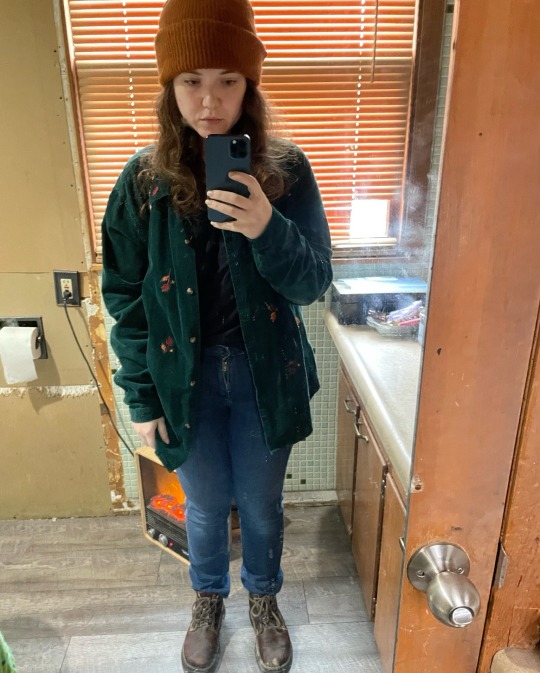
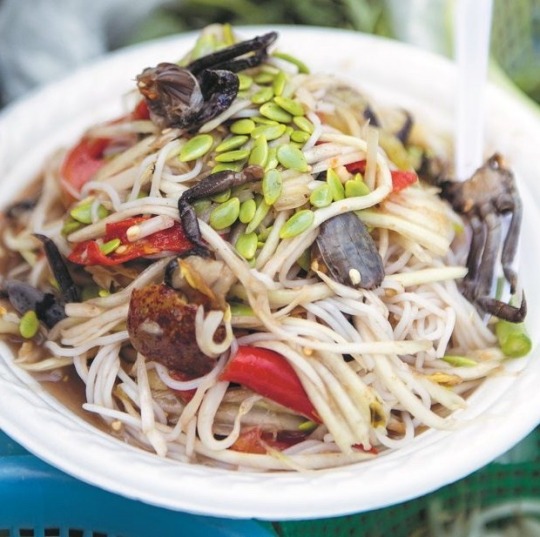
How i dressed to eat this today ^
#Felt like a very summer dish but i also ate duck noodle soup so whatever#Its thai green papaya salad with fermented salt crabs anchovies tomatoes chili lime fish sauce and other stuff. so good
34 notes
·
View notes
Text
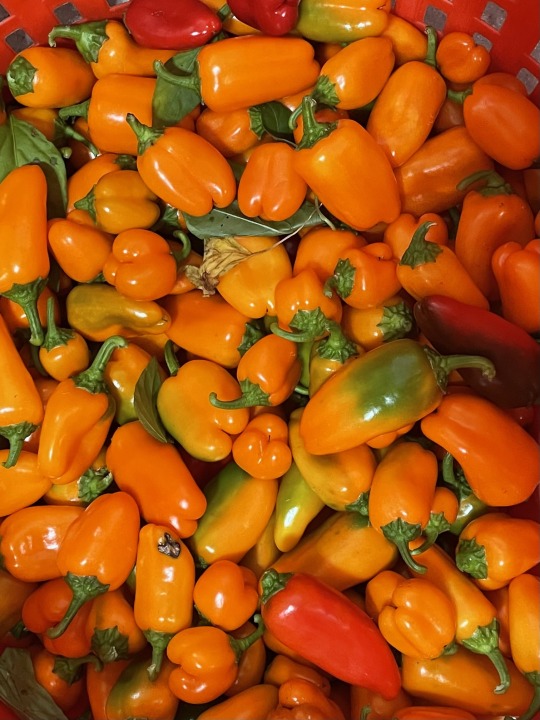
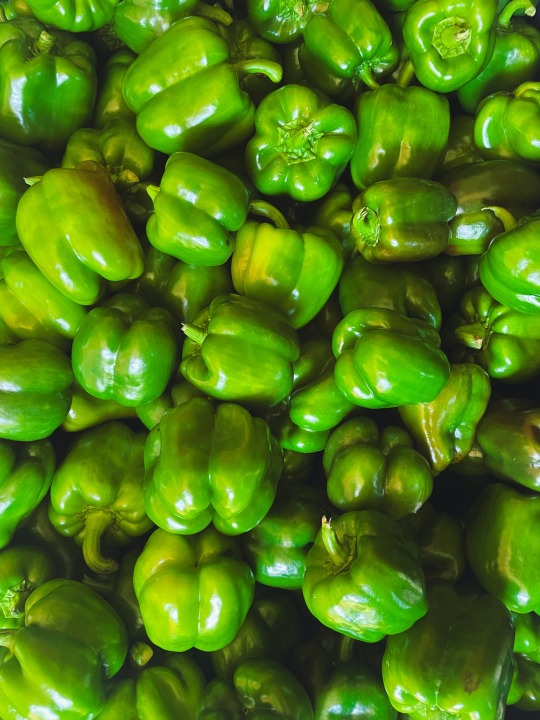
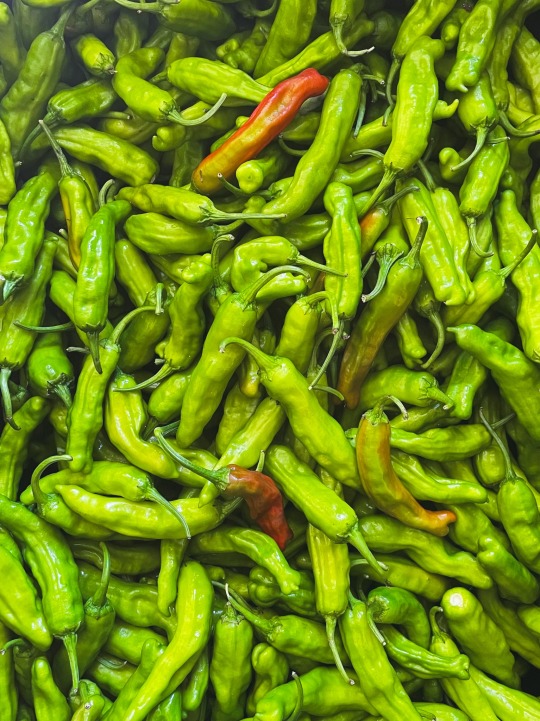
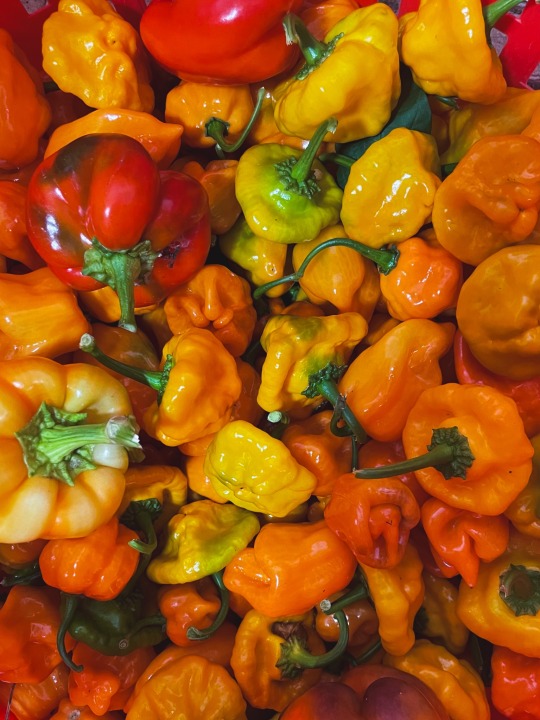
🫑 this is a pepper appreciation post 🌶️
#sweet peppers#bell peppers#shishito peppers#chili#habanero#scotch bonnet#vegetables#my photos#i can’t wait to ferment these bitches and make the most delightful hot sauce that i will eat in the tiniest increments
30 notes
·
View notes
Text

Vegan Singapore Black Pepper Sauce Spaghetti
#vegan#lunch#dinner#singaporean cuisine#southeast asian cuisine#pasta#spaghetti#cauliflower#black pepper#shallots#garlic#cornstarch#chili#curry leaves#fermented bean paste#vegan oyster sauce#soy sauce#coconut sugar#white pepper
49 notes
·
View notes
Text
this essay is going to be absolutely genius if I'm not talking rubbish
#girl either I'm having an epiphany or I'm stupid and I cannot articulate my epiphany clearly enough to know!#basically right ok the concept of authenticity#basically it's divided into two ideas - we perform authenticity relationally and then authenticity itself#which is what we're performing#but what if. the performance of authenticity were all there were. there's nothing behind it. ONLY the performance#performance is what CREATES the authentic! and as such the authentic is not a seperate concept from it!#I'm writing about food specifically Korean food but generally food and authenticity#thinking about pasta not being part of the italian national identity until immigration in the 19th century thinking about kimchi not being#fermented until the 16th century and the chili used in it not being native to Korea#like???#but I may be Literally Insane who knows
31 notes
·
View notes
Text
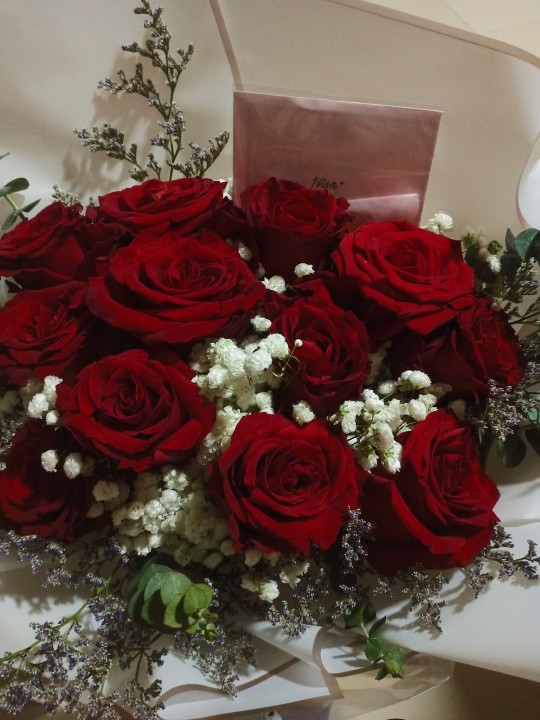
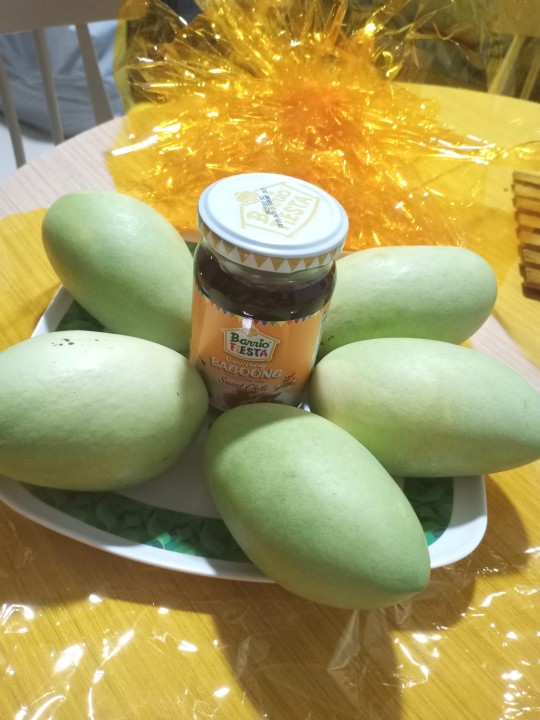
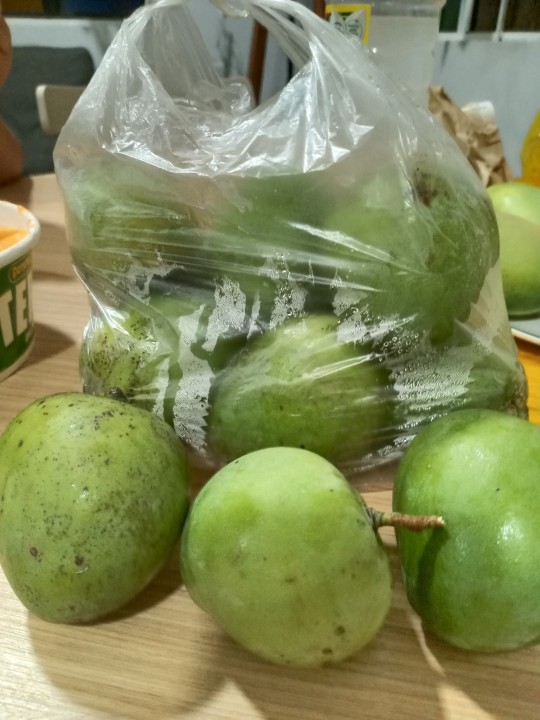
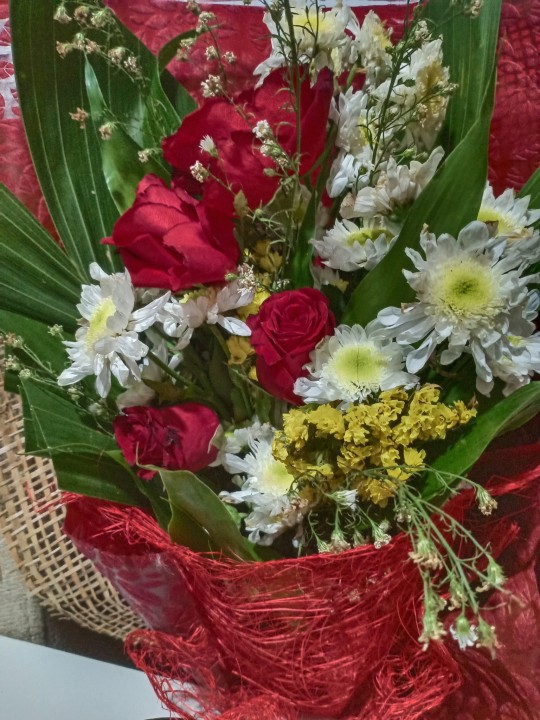
It's my birthday today and my gifts have been 2 flowers and 2 mangoes and that really says a lot about what people know about me 😂
#i loveeeee unripe mangoes#i wanna be dying about how sour they are#dip them in chili umami salt and fermented shrimp paste#mmmmmmmmmmmmmm 🤤#peachytalks
1 note
·
View note
Text
I feel like this blog might just be chronicling my chronic dissatisfaction with fermentation at this point, but fuck if I didn't just fuck up a perfectly decent kraut by letting it overferment and turn to mush. The flavour is soo good. And the texture is soo bad.
Homegrown ingredients too. I'm not crying, you're crying.
#fermentation#fermentering#sauerkraut#kraut#cabbage and pear and chili makes for a great flavour combo#just don't be me and be a dummy and not refrigerate just yet because you're too tired to deal with a jar change
0 notes
Text

hunan chicken
#main#chicken#chicken thigh#oyster sauce#dried red chili pepper#long hot green pepper#leek#fermented black beans#bell pepper#red pepper
0 notes
Text

I've been really enjoying making fermented hot sauces--can you tell?
The Green Chilies & Lime sauce is poorly documented: it's the haphazard combination of two different hot sauces when I realised one wasn't going how I wanted. I probably couldn't remake it if I tried--but I'm also ok with that. It's good, but it has its issues--namely, it's a bit yeasty. (Or at least, the opened bottle got yeasty. But it also got left on the counter at a build-your-own-taco-bowl party, so...)
The two Habanero-Peach sauces came about through different processes of the same ferment.
The smaller bottle is the strained fermentation liquid, tweaked for flavour with vinegar, salt, sugar, and a touch of peach puree; and stabilised with xanthan gum. It is very hot, I'd call it 9/10 spiciness.
The larger bottle is the solids, pureed with sweet red peppers, more fruit, tweaked as above, but with more sugar. It has the consistency of thin ketchup, and is both sweet and hot. It was the undisputed favourite at the party, despite being the ferment I was most skeptical of!
Although I originally rated its spiciness 4/10, I think the spiciness somehow permeated the entire sauce over time, and I would now rank it about 6/10.
#lactofermentation#fermentation#condiments#hot sauce#fermented hot sauce#food#jalapeno#habanero#poblano#habanero peach#fermented peppers#fermented chilies
1 note
·
View note
Text
trying to match the jjk men's eating pace
that one tiktok trend where you try to match the pace your partner eats bite for bite
featuring gojo satoru, geto suguru, nanami kento, fushiguro toji

g. satoru
Satoru was actually shocked when you told him you were going to get as many burgers as he was, joking that he was going to have to finish your leftovers (not that he minded). everything was going smooth as he calmly unwrapped the first burger, taking a bite that didn't seem to under or over fill his mouth, giving you a false sense of security as you chewed your food like normal. panic began to set in by his third bite, practiced hands picking up a pinch of fries to add to the bite he was working on.
you weren't sure if his bites were getting bigger or if he was starting to chew faster, but before you knew it your cheeks were full and he was already crumpling the wrapper to start his second burger, taking a casual sip from his soft drink.
it was laughable, honestly, the way you were still holding half your burger, cheeks almost painfully full, sauce extending your smile, unable to match his sip of burger-filled mouth as you tried your best to hold in your laughter. satoru none the wiser. effectively making you choke on a crumb that had you keeled over, shoulders jumping with your silent chuckles.
"woah, baby. baby, slow down." His voice full of concern, unwrapping his third burger before patting your back in attempt to clear your throat.
g. suguru
suguru always savored his food no matter what it was or how many times he's eaten it. it was great, you were glad he found solace in food considering the toll his curse technique had on his body and his relationship with food. you'd never ask him to change it, but now that you've decided to partake in this silly internet challenge the rumble of your stomach has given you some regrets.
all you wanted to do was dig in, salivating at your steaming bowl of ramen. suguru sitting in front of you, a soft smile on his face as he carefully crafted a smaller ramen bowl in his soup spoon. chopsticks steady and meticulous as he let two noodles coil onto the spoon, dipping the edge of the ceramic into the soup until the noodles just barely peeked through. you sat there, noodles pinched by your chopsticks though still submerged in the broth as he slowly arranged green onions, garlic, pork, fermented bamboo shoots and strips of dried seaweed onto the utensil.
"ah, here we go." he finally said, setting his chopsticks down making you bring your noodles out of the broth and up to your mouth until he reached for a small spoon full of chili oil.
"not that hungry yet, love?" he quirked his brows at you when he noticed your creaky movements as you waited for him, finally bringing his mini bowl of ramen into his mouth, letting the flavors melt on his tongue before starting his slow chew. you followed suit, taking a bite and a sip of the broth.
"so hungry, suguru," you comedically sniffled to yourself, averting your gaze when he began repeating the process all over again.
n. kento
kento was quick skewer the contents onto his fork or scoop his rice onto his spoon, but slow to chew. he'd been excited for this meal after all, waltzing into the kitchen with a pep in his step after leaving work on time, still in his tie as he rolled up his sleeves to begin cooking. the table ending up with a beautiful spread of new dishes that caught his attention in the magazine he picked up last weekend.
unsurprising, the conversation would be about his thoughts on how all the components melded together, how one highlighted another, what it reminded him of. always a memory of a place you two went to together, then a small smile gracing his lips as he tells you that the two of you should go there again in the future. he'd ask you your thoughts, lips forming a small o as he listened to your suggestion of adding a little bit of that the next time he wanted to cook the dish.
the only thing surprising about trying to match his pace was actually how much bread he consumed, which you hadn't realized before until you felt like bursting at the seams when he picked up his forth roll-- a new recipe with his homemade garlic oil painted on top. you'd given up a while ago, choosing to enjoy the food he cooked, his love for bread unmatched. your head in your hand as you watched him chew, anyone on the outside would've assumed that he was eating out of necessity, but under your gaze you were blinded by the sparkle in his eyes as the flavors danced on his tongue. the momentary pause of his jaw as he conjured up a tweak in the recipe to bring it to the next level.
f. toji
you honestly weren't even going to try matching his pace. he devoured. the short skewers of yakitori disappearing into his mouth in an instant, the only thing able to pull you from your amazement was the soft 'ahhhh' he let out as he widened his mouth to accept the food. he barely took the time to finish chewing before bringing another skewer to his mouth. meals with toji usually ended with him running a lithe tongue over his lips, patting his stomach before eyeing whatever was left on your plate.
"gonna finish that?" he asked, hand already reaching whether you were done with your food or not.
he hummed to himself as you walked side by side just having left the restaurant.
"a branch from a sendai restaurant just popped up, want to try their gyutan with me?"
ah, toji's bottomless stomach and his love for meat.

A/N : aahhh i'm sorry toji's section is short, not much to write when the food is gone before you can even look at it LOL i just had suguru's so clearly in my mind and i had to stop myself from writing kento actually cooking. lowkey don't think i'm equipped for these mutli character posts lol
picnic divider by @/thecutestgrotto
line divider by @/firefly-graphics
jjk men x reader masterlist
#jjk#jujutsu kaisen#gojo satoru#geto suguru#nanami kento#fushiguro toji#jjk x reader#jjk x reader fluff#gojo satoru x reader#geto suguru x reader#nanami kento x reader#fushiguro toji x reader#gojo x reader#geto x reader#nanami x reader#toji x reader#gojo fluff#geto fluff#nanami fluff#jjk domestic#domestic nanami kento
848 notes
·
View notes
Note
Okay, but how Jiaoqiu is going to be with someone who enjoys spicy food and is very VERY tolerant to it? Like, they have little to no reaction to the dishes where one bite is enough to cause even toughest to ask for water, meanwhile they just: "Hm... Not bad, could add more spice though." *Adds extra spice*
Spice Is the Soul of Life
Summary: While preparing a fiery stew of your own creation, you share an intimate and playful moment with Jiaoqiu. As the two of you challenge each other’s tolerance for heat, the shared experience sparks a deeper connection, revealing mutual admiration and kindling an unexpected bond.
Tags: Jiaoqiu x Reader, Cooking, Slow Burn Romance, Playful Banter, Spice Tolerance Challenge, Tender Moments, Found Family.
Warnings: Descriptions of spicy food and intense heat (potentially triggering for readers sensitive to food or spice-related content), Light suggestive undertones of romance.
A/N: this lowkey sounds like me ngl...🧍♀️

The aroma of freshly simmering chili paste wafted through the air as you stirred a bubbling pot of stew, the crimson liquid glistening ominously. It was a dish of your own creation, a concoction so fiery that even the most daring food connoisseurs would hesitate to try it. Yet, to you, it was comfort food, a beloved indulgence that reminded you of home.
Behind you, Jiaoqiu’s soft voice broke the silence. “That scent… Sichuan peppercorns, dried ghost peppers, and…” He tilted his head slightly, his fox ears twitching. “A hint of fermented chili bean paste, isn’t it? Quite the combination.”
You turned to see him standing in the doorway of your shared kitchen, leaning lightly against the wall. Despite his blindness, his eyes, half-hidden beneath his lashes, seemed to glow in the dim light. His presence was both calming and commanding, a blend of healer’s warmth and strategist’s precision.
“You caught all that just by smell?” you asked, impressed.
“Of course,” he replied with a soft chuckle. “A refined palate starts with a refined nose. Though I must admit, the intensity of your spices makes it quite easy to identify.” He tapped his chin lightly and made his way toward the counter, his movements fluid despite his lack of sight.
“You say that as if you couldn’t handle it,” you teased, placing a bowl of the stew before him.
Jiaoqiu’s lips curved into a sly smile as he took a seat. “I’m not one to back down from a culinary challenge, especially one involving spice. Let me be the judge of its ferocity.”
You raised an eyebrow, handing him a spoon. “Don’t say I didn’t warn you.”
With a graceful motion, Jiaoqiu took a spoonful of the stew, blowing gently on it before tasting. For a moment, he paused, his expression unreadable. Then, a slow, satisfied grin spread across his face.
“Rich, layered, and delightfully numbing,” he murmured, savoring the heat that spread across his tongue. “You’ve outdone yourself.”
“Really?” you asked, surprised. “Most people would be scrambling for a glass of water by now.”
Jiaoqiu chuckled softly, his bushy tail swishing behind him. “Did you forget who you’re speaking to? I was raised in the Alchemy Commission. We specialize in potions that burn as they heal. My tolerance for spice is… considerable.”
Your eyes lit up with a mischievous glint. “Oh? In that case…” You reached for the jar of extra chili oil and added a generous dollop to his bowl. “Let’s see how considerable it really is.”
Jiaoqiu’s laughter was warm and unrestrained as he stirred the added spice into his stew. “You’re a bold one, aren’t you? Very well, I accept your challenge.”
As he took another bite, you watched closely, expecting even the slightest sign of discomfort. Instead, Jiaoqiu’s expression remained serene, though a faint flush rose to his cheeks.
“Hm,” he mused, setting his spoon down. “Not bad… but I think it could use a touch more Sichuan peppercorns to balance the bitterness of the ghost peppers.”
You stared at him in disbelief. “You’ve got to be kidding me.”
“I assure you, I’m not,” he replied, his tone light but sincere. “In fact…” He reached for the peppercorn jar and added a sprinkle to his bowl, stirring it with practiced ease. “There. Now it’s perfect.”
You couldn’t help but laugh, shaking your head. “I guess I’ve met my match.”
Jiaoqiu smiled. “And I, mine. It’s rare to find someone who shares my appreciation for spice, let alone someone who can surpass me in resilience.” He paused, his expression softening. “It’s… refreshing.”
You felt warmth rise in your chest, one that had nothing to do with the spice. “Well, I’ll take that as a compliment.”
“It is,” he said simply, his voice carrying a sincerity that made your heart flutter.
The two of you continued to share the fiery stew, the spice creating a shared experience that seemed to burn away any barriers between you. In that moment, surrounded by the warmth of the kitchen and the heat of the dish, you felt a deeper connection forming—a bond as enduring and intense as the flames you both so loved.
As the evening wore on, Jiaoqiu leaned back with a contented sigh. “You know,” he said, his tone contemplative, “spice is much like life. It burns, it numbs, but it also awakens. Perhaps that’s why I’ve always been drawn to it.”
You nodded, understanding his sentiment. “And sometimes, the hotter it gets, the more alive you feel.”
He turned his head toward you. “Exactly. And with someone like you by my side… I think I’m ready to face whatever heat life throws at me.”
Your heart skipped a beat at his words, and you couldn’t help but smile. “Careful, Jiaoqiu. You might make me think you’re a romantic under all that wisdom.”
He chuckled, his laughter as warm and comforting as the stew you’d shared. “Perhaps I am. Or perhaps… I’ve simply found someone worth sharing my fire with.”

#x reader#honkai star rail#hsr#honkai star rail x reader#hsr x reader#jiaoqiu#jiaoqiu x reader#jiaoqiu x you#jiaoqiu x y/n#jiaoqiu hsr#jiaoqiu honkai star rail#cooking#slow burn romance#playful banter#spice tolerance challenge#tender moments#found family
126 notes
·
View notes
Text

Vegan Rad Na (Thai Rice Noodles in Gravy)
#vegan#lunch#dinner#thai cuisine#southeast asian cuisine#noodle bowl#rad na#noodles#tofu#gai lan#garlic#fermented bean paste#cornstarch#soy sauce#white pepper#vegan oyster sauce#coconut sugar#chili#coconut oil#sea salt
37 notes
·
View notes
Text
you know what. fermentation, smoking, canning, pickling, curing, drying, and other methods of food preservation have been popular since before the invention of modern technologies. as is milling grains for rice and bread. these are things that you can do as long as you know the process and have the proper tools.
with that in mind... why is eating 200 year old pre-war food still a viable option for people of the wasteland? by 2281, there are farms. there are ranches. the ingredients are there. the know-how and tools are there. the recipes are there! it's not as easy as just going to a supermarket, but y'know, there's also trade. do you want some bighorner jerky in exchange for brahmin tallow? hey, give me some canned mutfruit and i'll cook you the most delicious deep fried giant ant with garlic and chilies and some lime juice on the side. take this sourdough loaf and firegecko menudo before you go. i just!! there are so so many interesting options and instead we get bland steaks and meat on a stick!!! why is wasteland cuisine so boring!!!
#shh peri shhh#eating 200 yr old cram? cant be me#im out here injecting some flavor into wasteland cuisine baby!!!!!!!!!!
956 notes
·
View notes
Text
This is very late and can only apologise. Life and health stuff make a very nasty combination if their timing coincides.
This randomly vanished before reappearing a few days ago so taking no chances in case it does it again...


Source
Since I just typed the lot up for bluesky alt text:
Master Jim - 1/2 pound all-natural beef, blue cheese, roasted mushrooms, maple bacon, organic greens, horse radish aloli , shaved onion 18 Pair with Mother Ale -Denali Brewing Company 6 Troll Market - Dry rubbed smoked chicken breast, gruyere, chimi churri, tabasco scallion aioli, arugula, tomato 16 Gunmar the Black - 1/2 pound all-natural beef patty, fermented chili sauce, caramelised onions, mozzarella cheese, pickled chilis, crispy garlic 17 Blinkous Galadriel - 6oz black bean walnut patty, tomato, organic greens, hummus, pickled beet and fennel slaw, vegan roasted garlic aioli 16
Any typos or misreads is due to the fact it's hard to type and currently exhausted.
#Trollhunters#Tales of Arcadia#Not entirely sure what group tag this would go under#Maybe when can think better can sort it
60 notes
·
View notes
Note
What are each of the main cast’s favourite foods, and how to they reflect what they grew up eating/their background/broader cultural trends?
Key for the constructed foods that come up in this post:
Nara: a type of citrus fruit, comparable to a lime in sourness. Peledyo: a type of fermented fish sauce used as seasoning in of itself or a base for other sauces. (This is a knockoff of irl garum). This is FUNDAMENTAL to Imperial Wardi cuisine, and closely analogous/connected variants are produced by all the peoples of the Viper as well as across most of the Lowlands (southeast of Imperial Wardin). Magah: a type of tuberous root vegetable. Similar to a potato, but coming from a wholly different plant and more strongly flavored (notes of cabbage) with yellow-orange flesh. Heavily cultivated in the Highlands and considered more of a famine food elsewhere in Imperial Wardin. Yute: a cultivar in the same species as magah with purple flesh and a sweeter taste, a staple in the mountainous parts of Kosov and some other parts of the Burri Republic. Gaiyi: a brassica cultivar used in Kos cuisine, resembling broccolini. Completely absent in Imperial Wardin. Yamnina reyla: the premier spice blend used in Wardi cuisines, it has some regional variants but its core ingredients are crushed chilis, coriander, cumin, and firebug (imparts little flavor but significant reddish-orange color that gives this mix its name), all ground together. Camiche: an edible seed, eaten as a nut. Kolis: a cactus-like plant with edible fruits and young shoots. The fruit tastes like watermelon and is very sweet, but has more sour notes. Anuje: a sap extracted from one of the region's few native palms, has a sweet, molasses-esque flavor. This is the staple sweetener and culturally favored over honey in most provinces, consumption of honey is generally seen as a 'rural' thing]
---
Tigran spent the first 11 years of his life in pretty extreme poverty as an agricultural laborer so did not have a lot of exciting food. His family is Ubiyan-Wardi (pretty rare ethnic minority in the region, mostly descending from people hired or enslaved as war captives and/or indentured servants for labor by Imperial Bur at its height). Many of these people formed communities that retain their cultural identity to this day, but these largely occur in the north and in the province of Lobera. Most people with Ubiyan heritage in South Wardin come from more isolated lines that fully integrated and intermarried with the Wardi(nae) population, and are heavily 'Wardinized' in the present day.
Tigran's family is an example of one with this cultural heritage being largely lost- they know that much of their ancestry comes from far northeast across the Viper but they don't know from where exactly. They are culturally South Wardi but with some traditions (and names, 'Tigran' and 'Otto' are both Ubiyan given names in origin) that have survived passed down from parent to child. To the point of this post, a lot of these traditions involve food.
He mostly ate a pretty typical South Wardi agricultural diet with the majority of his meals being variations on maize and lentil porridge, yams, onions, dairy, and foraged plants. His village also reared horses for milk and wool and ducks and fowl for eggs (and occasionally meat). He lived right on the Brilla River so would get the benefit of meat from fish or the occasional wild duck or goose. When he was 5 someone in his village killed a bull crocodile that had been eating their horses and they all had a big pit roast with it to celebrate, but he barely remembers this.
A major Ubiyan cultural element that he experienced in his childhood diet was a form of pasta. His mother and grandmother would make pasta out of maize dough in the shape of a cowrie, which they just referred to as 'little shells'. They had a secret ingredient used to toughen the consistency of the maize dough to hold the shape but wouldn't tell him, since this was apparently only for the women to know. His mother planned on teaching his future wife to make these little shells, and made it very clear she wouldn't let him marry any woman who couldn't get the technique down. To celebrate the new year, they would make a larger variant stuffed with soft horsemilk cheese, explaining that it was for good luck and abundance in the next year. This was never a Favorite food of his as a child (his favorite was the joyous occasion he got to eat fatty, non-gamey domestic duck), but he's never been able to find these little shells anywhere else, hasn't seen his family since he was 11, and misses it.
His FAVORITE food is duck. The best meal he's probably ever had was roast duck glazed with date wine, dried nara, chilis, and a little bit of peledyo. Duck is central fare for a holiday that is timed when the reed ducks return to the region and start to breed. This moment is recognized as the transition from a period of seasonal barrenness to abundance (the mid rainy season through mid dry season span in which plant life flourishes, ends with the last harvest periods for most staple crops). It involves a feasting day in which most people make meals based around preserved fruits/vegetables, early wild forage, and duck (hunted or slaughtered).
Tigran completing his initiation as a Galenii monk (which involves a year of only taking food received via begging) timed itself very close to this festival occurring. So not only did he Finally get to eat regular meals, but he had never in his entire LIFE tasted anything so good. He was 12 years old and was guided by his mentor into an epiphany that like, 'this IS what it's all for, guaranteeing that we have the season of abundance year after year. AND more importantly I get to eat really really really good meals provided by the temple'.
---
Palo grew up in the very cushy end of the mercantile commoner class with his father being a guild glassmaker, and lived in the province Odkotonnos (one of the more agriculturally rich) and city of Godsmouth proper (THE center of trade), so he had regular access to a decent variety of pretty good food. He and most of his family are first generation immigrants from Kosov (a province of the contemporary Burri Republic, occupying the same latitude as South Wardin). He moved as a baby and grew up eating a lot of Kos food in addition to the general western Wardi diet (which itself has a heavy Burri/Kos/Titen influence).
(The most immediately distinctive difference between these and Wardi cuisines is staple grains/starches often being eaten in the form of noodles, which is more broadly a characteristic of a wide span of the Inner Seaways peoples west of the Mouth. The other big difference is a fermented corn sauce (functionally similar to soy sauce) being the foundational umami flavoring, rather than the peledyo fish sauce that is a staple in Wardin)
He also spent a cumulative few years of his life in Kosov and there had the favorite thing he's ever eaten, which is a mung bean noodle dish with catfish, yute, gaiyi, spinach, onions, and a chili-olive oil sauce. Some of the core ingredients are rare if not absent in Imperial Wardin (magah is generally considered a famine food and not widely cultivated outside of the Highlands, gaiyi grows in the humid montane conditions found in southwestern Kosov, and this particular kind of catfish was notably tastier to him than commonly eaten Wardi species) so he's never had this exact dish or a close equivalent since.
Otherwise his diet throughout most of his life was very seafood heavy in addition to staple grains, starches, and legumes. He dislikes most non-fish meat and hates the texture of fat, so eats a lot of whitefish when given the chance.
One thing that actually like, comes up in canon as a thing he really loved is seabass he ate at social events with his family. The bass is roasted whole and (along with other elements of the meal) surrounded by dips and condiments. You pick up the fish meat with pieces of pounded yam and dip/scoop up condiments before eating it. On a really nice occasion, condiments could include fermented corn sauce in plain and semi-sweet form, Basically Aioli (a blend of mashed garlic and olive oil), several types of peledyo (sweet anuje-wine peledyo, bitter vinegar peledyo, plain salty peledyo, etc), several hot sauces (the typical formula here is different kinds of chilis mixed with olive oil, cumin, coriander, garlic, and citrus juice, all mashed into a liquid paste), a sweet anuje-garlic sauce, chopped onions/parsley raw in citrus juice, a mash of peas + onions cooked in duckfat, fermented salted crab roe, plain olive oil, chili-olive oil, etc.
This style of eating is an aspect of the Burri cultural sphere (and the Odkotonnos provincial subculture by extension), utilized for meals during intimate social gatherings. A main course of meat cooked minimally (or wholly un-)seasoned and served with a variety of sauces and seasonings to be sampled independently aims to bring out and emphasize each component's unique qualities. A palate cleanser (usually a weak wine infused with a citrus fruit's juice) is sipped in between. This also had/has levels religious function; the traditional condiments in this meal (most of which aren't represented here) are connected to major deities of the Burri pantheon, and the diversity and abundance of the meal is recognized as the gods' many gifts made manifest (and some of each are left as offerings in a home shrine).
Palo and his family are practitioners of the Faith of the Seven Faced God (a sect of which has spread into the Burri Republic, where it is currently a very significant religious minority) and have been for several generations. So the religious aspects were framed differently in his experience, but have similar functions in representing the great abundance that God provides. (He was also brought up instructed to leave some of the corn sauce Specifically as an offering in the household shrine. This sauce is a staple across cuisines in the Burri sphere and a key offering to Vazhirum, the goddess of maize, patron of the city Titenegal, and functionally the chief agricultural deity of the pantheon. Offerings of the sauce to agricultural Faces is retained as a practice in Burri sphere sects of the Faith).
Anyway Palo mournfully thinks about this delicious seabass meal with his extended family while sitting in an alleyway with Tigran and choking down unseasoned boiled pigeon (that the guy literally caught by hand) with pounded yam, not a condiment in sight.
---
Brakul was raised in a low cattle-wealth clan in the West Rivers region of the Highlands. He lived in the Urbin river valley, which is one of the largest and most agriculturally fruitful (though his clan itself was located upland and could not grow a lot of this themselves). The West Rivers Hill Tribes have an amicable trade relationship with the province of Ephennos, so he had a fair deal of exposure to Wardi trade goods, but this didn't affect his diet much. He grew up eating an everyday diet consisting of the core staples of barley + amaranth + magah + LOTS of dairy products, in addition to some hunted/fished meat and foraged wild plants.
Crayfish was his favorite food growing up. He lived in immediate proximity to several creeks, so freshwater food (crayfish, trout, mussels, frogs) could be a pretty major portion of his diet during the summers. On some occasions, crayfish and mussels would be boiled to make a broth with chilis and onions, then served in a soup with yogurt, barley, butter, fennel, and magah. This was his absolute favorite meal and he particularly liked the crayfish themselves (his brother didn't, so would trade his crayfish for Brakul's mussels).
Living in a coastal city and being introduced to the concept of Crabs and Lobsters (it's like a crayfish but HUGE) later in life was lifechanging. Crab meat is now his absolute favorite food. He sometimes attempts to recreate the crayfish boil dish with crab (he does a pretty solid job but the yogurt always ends up curdled). He's also a fan of a dish where a softshell crab is fried and then coated with a concentrated sticky sweet peledyo sauce.
He's pretty enthusiastic about trying new foods (and benefited tremendously from having a rich boyfriend who can facilitate this) and has decided that anara is the best game the lowlands has to offer. Their tails are VERY rich, tender, and fatty, very good roasted with a sweet+spicy sauce. He first experienced this at the wedding of one of Janeys' cousins and now insists on eating it regularly/pursuing anara on hunts over more favored game like gazelle and nechoi. There's also a greater variety of alcoholic beverages available, and he's become fond of the a very decadent form of date wine sweetened with anuje and imported cardamom.
He also likes + misses a dish composed of feydhi (highlands khait) fat which is rendered, mashed with dried berries and a little honey, left out in the snow to chill solid, and then sliced and eaten on bread. This is a staple in midwinter feasts and a special treat. Its considered an obligation for each tribe's chief clan to fatten some of their khait on grain and then provide their fat to their constituents for this feast (the ability to Afford to give this gift effectively demonstrates + reinforced their power). Young children and pregnant women get first dibs/the biggest helpings (regarded as good for a growing body, helps pack fat on for the lean season) so there's a childhood nostalgia aspect to it. It's something he would look forward to every year.
He hasn't had any access to this dish whatsoever in South Wardin, as khait are virtually never slaughtered except as an act of desperation (culturally considered to be poor meat in general) and the Coldest winter temperatures average in the high 40s F (sub-freezing temperatures and snow Happen but not predictably or regularly) which is not adequate to cool fat to the desired consistency. This is particularly torturous because feydhi are actually quite common in South Wardin as pack animals and have a tendency to get VERY fat on the seasonal abundance of grass (being an 'easy keeper' landrace adapted to having nutritional needs met by much poorer mountain forage). His khait She-Bites is a feydhi and was sold to him cheap (on account of behavioral issues), he was originally intending to have her butchered but got too attached.
---
Etsushir grew up in a clanless Jazaiti community, in a coastal fishing town northeast from the city of Wardin proper. The existence of clanless Jazait mingling with Wardi populations long predates Imperial Wardin as an entity, but these communities have grown substantially in the past two centuries, in large part due to heavy encroachment on Jazaiti fishing territory causing major subsistence issues and driving many people to look for employment to sustain themselves. They are very marginalized ethnic minorities and tend to form distinct sub-communities amid their Wardi counterparts, but the decentralized structure of Jazait society and certain practices (like polyandrous marriage and minimization of reproductive females in any given family) cannot be fully retained in these settings (both on the levels of pure logistics and a result of disenfranchisement). As such, these groups tend to experience a degree of 'Wardinization', which affects all aspects of life, and in this case The Food.
Etsushir would have grown up in large part eating a typical coastal South Wardi diet (lots of maize porridges, lentils, and fish), in addition to exploiting uncultivated resources that his human Wardi counterparts physically cannot (certain grasses especially) or culturally Do not (only a couple seaweeds are considered good eating).
His favorite food is part of the Fusion Cuisine found in some of these partly Wardinized Jazaiti communities. It's a dish consisting of several kinds of seaweed mixed with hominy and raw tuna that has all been marinated in vinegar peledyo. His family and wider community have adopted the Faith Of The Seven Faced God and practice what would be considered a syncretic folk-variant. The Jazaiti Moonfather (who created tuna and sometimes takes the form of one) is associated with the Face Mitlamache, and tuna is often eaten in place of beef during the Mitlamache-focused maize planting festival. His family getting to catch, keep, and eat their own tuna would have been a special occasion largely reserved for these celebrations.
(The strictly Jazaiti version of this dish uses seaweed and fish in addition to the young shoots of a type of grass, all cured in nuji (VERY bitter native citrus, not commonly eaten by humans) juice. Elowey and human chemical sense of taste overlaps considerably, but elowey can digest a wider range of plant matter and have a substantially more complex experience with bitter tastes, a lot of foods from elowey cuisines are distastefully bitter to human palates)
He also has the genes for lactase persistence (VERY rare in the Jazait population, as well as the broader White Sea elowey population group). He doesn't like yogurt and finds adults drinking milk to be mildly disturbing, but is very fond of cheese. He prefers cowsmilk cheeses over the slightly more common and accessible horsemilk, and likes a fairly common Wardi cheese dish (a soft cowsmilk cheese cooked in a pepper/onion sauce and eaten atop grits).
---
Faiza (and every other character from here on) is in the noble class and grew up eating a substantially more varied, calorie rich, and meat heavy diet than the average person. This doesn't mean that every meal is Very Fancy, they're still ultimately reliant on most of the same basic staples as the lower classes, but their everyday diet includes More of these staples at once, with more variety, more spices, and a much more regular addition of meat.
The Haidamanes are all multiethnic (most relevant here is that their father was Titen on his mother's side and South Wardi on his father's), they're squarely South Wardi in terms of cultural identity but were brought up eating some Titen cuisine on a more than incidental basis. Faiza was the only one of her siblings that was notably into this, she thinks the noodles are fun. A favorite standby would be a dish made with very thick mung bean noodles, chickpeas, pre-roasted horse udder, cabbage, and onion, which is all fried together in fermented corn sauce and garlic-olive oil.
Faiza really likes salutachin dog meat, most commonly eaten in a dish where it is roasted with a rub of olive oil, garlic, date wine, and smoked yamnina reyla. Salutachin is a dog breed specifically raised for meat and is a South-Wardi specific practice in the present day (livestock dog types fed on plant matter used to be more common across the region. Burri influence contributed to the notion (already extant in some Wardi groups) that ANY form of dog meat is unclean, and the practice is extinct or rare in most other parts).
This is kind of a luxury food and regarded as a delicacy. It's of critical importance that salutachin stock is kept entirely 'pure' and prevented from breeding with ANY other dogs, and fattened on exclusively vegetarian diets, generally maize and yams (this partly stems from wider dietary taboos surrounding consumption of predators, but largely just improves the taste of the meat). They can be more costly to maintain than other types of livestock (which will help feed themselves via grazing) or working dogs (which aren't supposed to be eaten and thus can be fed on any number of scraps). As such, it tends to be fairly expensive and reserved for special occasions, and is a mainstay at South Wardi wedding feasts.
Faiza has a notable childhood memory of being at her uncle's wedding, feeding a scrap of salutachin to one of the hunting dogs, and experiencing a kind of sick, nervous thrill at compelling a good animal to cannibalism. She interacts with food taboos/taboos in general more skeptically than average and experiences temptations to violate them, though she's never actually gone through with it on the food level. She doesn't ultimately disagree with any of them though, just interprets their necessity through her proto-materialist philosophical background instead of the strictly spiritual angle. She's very fixated with the stories of Godsmouth civilians starving to death in the siege resorting to eating feral dogs (which is VERY taboo) that had themselves eaten human corpses (thus this is like, the worst thing you could possibly eat short of an actual human corpse). She's kind of fascinated with cannibalism in general.
---
Hibrides is from the city/province Erubinnos and predominantly of Yuroma-Wardi ethnicity. This refers to descendents of a Yuroma ethnic group first arrived as refugees several centuries prior, and is considered an Imperial Wardi subculture in the present day (practicing the state religion and fully integrated into the broader cultural sphere, but retaining a sub-identity).
Erubinnos has a near-equivalent makeup of South Wardi and Yuroma-Wardi inhabitants and its regional cuisine is influenced by both groups. (Some distinctive Yuroma elements are the regular consumption of raw fish, heavy specialization into smoked and cured meats (as a culinary form rather than a practicality), use of squid ink, and favoring of rice (which was first brought here by Yuroma migrants)). So Hibrides spent her first 15 years of life eating a bougie version of this diet before being moved to the province of Wardin for marriage.
She's a Very picky eater and has a lot of dislikes- she doesn't like most whitefish, most freshwater fish in general, tuna (doesn't actually dislike the taste but found a very big worm in her tuna once and it put her off forever), most red meats (she particularly doesn't like horsemeat, she got attached to a childhood pet horse to the culturally rare point of not wanting to eat Any horse meat altogether), eggplant, most lentils, or raw tomatoes. And to top it off she has a lower than average heat tolerance. So when she has a choice in the matter she tends to go for oily fish, fowl, rabbit and hares, and some reptiles like crocodile + turtles + certain snakes.
One of her favorite meals is an Erubinnos-specific dish where sardines (or other oily baitfish) are marinated in a sauce made with vinegar-peledyo, olive oil, and a sauce of mashed tomato + garlic + more olive oil, and eaten raw. This exact preparation with raw fish is uncommon in the city+province of Wardin, but she has the benefit of living in a household with a cook on hire and requests it very frequently. It reminds her of home.
She also used to love turtle meat (a type of softshell turtle is a delicacy here, usually eaten in soup). The Erubinnos regional turtle soup is kind of an outlier among Imperial Wardi cuisine in being very delicately flavored (a thin broth made with a dry wine, onions, fennel, rice, and usually ginger (imported)). She actually prefers the South Wardi variant (which is a heartier stew with heavy seasoning, eaten over grits).
She has had intense cravings for turtle during each pregnancy (which is interpreted as a bit of a concern- most river-based foods are thought to support a healthy pregnancy, but Cravings indicate that the womb is excessively 'hot/dry' and at greater risk of miscarriage). She ended up liking turtle a lot less after the first pregnancy when the cravings ended, and shifted her reptile soup focus to a species of python with a similar tasting (but less luxuriously fatty) meat. The return of the turtle cravings was one of her first indicators that she was pregnant a third time, and she doesn't stand a goddamn chance of getting any turtle meat in the 6th year of the drought.
She's pretty fond of a lot of game meat in general. Her favorite uncle was an avid hunter and made a point of bringing back gamebirds (and their eggs and feathers) for her, so she has a nostalgic fondness for dishes with duck, goose, ibis, pheasants, and the like. Hunting is also one of the diminishingly rare things she enjoys doing with her bitch husband and she's found that actually participating (granted, just in the form of watching and yelling directions) makes eating it afterwords more satisfying.
She'll only eat the nechoi they kill smoked and cured though, it tastes repulsive to her otherwise (in no small part due to this tending to be big boar nechoi killed in a prolonged, somewhat foolhardy solo struggle and is thus pumped with testosterone and fear hormones). This meat is stripped of (horrid tasting) fat, salted, slow-smoked, and usually eaten in soups.
---
Janeys is also somewhat of a picky eater, in his case he dislikes almost any animal product that comes out of the water (with a particular disdain for shellfish and crustaceans), and consciously frames it as such- crocodile, duck, and goose is an exception because they don't live in the water permanently, turtle is on thin fucking ice. He has to make an exception for peledyo because it's in just about everything and he can't honestly say he dislikes it.
His favorite meat is beef. He and his siblings grew up eating more beef products than average (even for nobility) due to the agricultural aspect of their wealth being rooted in ownership of cattle herds (which are actually reared, managed, and slaughtered by peasants). The Haidamane family is considered 'new money' landed nobility (opposed to established, multi-century old landowning families with wealth based in crop agriculture)- the vast majority of their wealth is mercantile, with a small facet being the 'ownership' of mostly uncultivated scrubland and the cattle grazed there. Janeys is now in charge of the latter aspect after being quietly cut out of his actual intended inheritance, so this humiliation has a fringe benefit of having plenty of beef around, AND he hasn't quite gotten sick of it yet.
Cattle are very sacred animals and the Only sacred livestock. Sacred status doesn't entail not being eaten by any means, but it does entail a lot of emotional+spiritual investment in them as livestock and ritual surrounding their rearing and consumption. Janeys has also always been a little jealous that both of his sisters are in the priesthood, and his (ultimately very distant) involvement in the management of these animals (some of whom are donated to temple sacrificial stock herds) feels like a slice of that, getting to eat their meat on a relatively regular basis is psychologically gratifying in ways beyond just liking the food.
His favorite cut is actually the oxtail above anything else. This would mostly be eaten in a (notably bougie) South Wardi oxtail soup (tomato and olive oil sauce, wine, beef broth, yamnina reyla, saffron, hominy, onions, garlic, cabbage). He also is very fond of sweetbreads, and the liver. The liver is culturally considered the best part of the cow and its consumption is ceremonially restricted- half of the liver Has to be offered in sacrifice for each cow slaughtered (a sort of thanks-giving and payment for the cattle's death), and the other half is reserved for the patriarch who owns the cattle, which can be distributed as he chooses. As of his father's death, Janeys is now technically the patriarch of his family so like, great news for him.
There are no such restrictions on the livers of other regularly consumed animals, and he does like horse liver too. Usually takes it in sausage form (the favored, high quality type here is minced liver mixed with the tender ground meat of the tail, cumin seed, and thyme, cased in caul fat).
He's notably fond of sweet foods- major examples available are roasted figs with cheese, figs or dates stuffed with nuts, sticky pine nut and/or pistachio 'candy' made with anuje, candied figs/dates/kolis/nara. One variety of cornbread is stuffed with pine nut + camiche + pistachio, fried, and glazed with anuje. A type of native melon (similar consistency to a watermelon but VERY mildly sweet, tastes more like a cucumber) is used to make a cold soup with mint + thyme, he takes it sweetened with anuje. He also tried grilled honeycomb with honey + larvae while in the southern-central Highlands and was shocked that he liked it (given that insects are not only famine food but Peasant famine food).
In relation to this, he eats a lot of fruit when it's in season. His favorite fruits are figs and pomegranates. These aren't accessible year round and he doesn't particularly like them dried on their own, so it's something to look forward to every year. Kolis has a very long fruiting season and he has one growing on his balcony for personal use.
He likes sweet wines (typically served strong, rather than watered down like how most wine is consumed on a regular basis) but is a lightweight and noted sloppy drunk. He dilutes it with rosewater on occasions where he's exhibiting a reasonable degree of self control.
---
Couya isn't a terribly picky eater (she will eat just about anything) but has strong proclivities towards very simple comfort foods and doesn't like meat all that much, to the point of her chosen diet being regarded as spartan and peasant-esque. A big part of her personality is thinking of most of her fellow nobility as Pussies and making a bit of a show about how much she doesn't mind discomfort and relative non-luxury, which extends to her food tastes. (though to be clear, this is mostly a prolonged act of 'fuck you mom/brother/most of my extended family'. If she had to spend a month living as an actual peasant she would DIE).
This is also motivated in part by the fact that her childhood home life was legitimately horrendous and a whole lot of Really Nice Foods and Delicacies are associated with bad memories for her (particularly the Titen noodle cuisine that Faiza is very fond of, since that's the only element she's ONLY experienced in that home and nowhere else.) Switching most of her diet to basics more characteristic of the lower mercantile class (and eating very little meat outside of holidays and ceremonies) is kind of an escape from that.
She doesn't really like sitting down for meals and favors 'husk meals', which is a subclass of foods built around being wrapped and cooked in corn husk, where they will hold a semi-solid shape and can be eaten on the go. There's a tremendous variety of husk meals, this is the equivalent of The Sandwich in terms of its utility and variability. They're usually composed of a seasoned grain or starch, often stuffed with vegetables/cheeses/egg/meats. Some variants resemble a sausage (without casing) where equal parts of a finely chopped/ground meat is mixed with grain and other ingredients and cooked in the husk. These meat variants most often use meat from the head (as well as eyes, tongue, and brain, and leftover scraps) to extend a valuable slaughtered carcass; head-husk is specifically regarded as a peasant food in this capacity.
Her favorite husk meal variant is one made with seasoned crushed rice stuffed with onions, cabbage, and soft cheese. Rice is her favorite grain, but its not The Most accessible where she lives (the province of Wardin is the driest and has a very small rice output) so she's having variants with maize dough/grits instead on most occasions. She also loves okra (a landrace of which can be grown here, though is a fairly delicate and non-staple crop), which is often eaten with other vegetables and hominy grits (she usually takes this as a husk meal too).
#This took me fucking FOREEVVERR to write lol. Also is minimally proofread sorry if anythings fucked#I'm probably going to have an updated version of that general food post it's gotten more fleshed out#with some things removed due to more concrete ideas of where certain grains/vegetables have been domesticated and would have#spread here by this point in history#Should note that most foods should be assumed not Identical to real world counterparts but Close Enough#(as in like. they might be different cultivars than extant irl or etc)#I only give them unique names when it's a full spec bio plant (of which there are few) or distant enough from an IRL analogue that#its worth separating
58 notes
·
View notes
Text

[ID: A circle of overlapping semi-circular bright pink pickles arranged on a plate, viewed from a low angle. End ID]
مخلل اللفت / Mukhallal al-lifit (Pickled turnips)
The word "مُخَلَّل" ("mukhallal") is derived from the verb "خَلَّلَ" ("khallala"), meaning "to preserve in vinegar." "Lifit" (with diacritics, Levantine pronunciation: "لِفِتْ"), "turnip," comes from the root "ل ف ت", which produces words relating to being crooked, turning aside, and twisting (such as "لَفَتَ" "lafata," "to twist, to wring"). This root was being used to produce a word meaning "turnip" ("لِفْتْ" "lift") by the 1000s AD, perhaps because turnips must be twisted or wrung out of the ground.
Pickling as a method of preserving produce so that it can be eaten out of season is of ancient origin. In the modern-day Levant, pickles (called "طَرَاشِيّ" "ṭarāshiyy"; singular "طُرْشِيّ" "ṭurshiyy") make up an important culinary category: peppers, carrot, olives, eggplant, cucumber, cabbage, cauliflower, and lemons are preserved with vinegar or brine for later consumption.
Pickled turnips are perhaps the most commonly consumed pickles in the Levant. They are traditionally prepared during the turnip harvest in the winter; in the early spring, once they have finished their slow fermentation, they may be added to appetizer spreads, served as a side with breakfast, lunch, or dinner, eaten on their own as a snack, or used to add pungency to salads, sandwiches, and wraps (such as shawarma or falafel). Tarashiyy are especially popular among Muslim Palestinians during the holy month of رَمَضَان (Ramaḍān), when they are considered a must-have on the إِفْطَار ("ʔifṭār"; fast-breaking meal) table. Pickle vendors and factories will often hire additional workers in the time leading up to Ramadan in order to keep up with increased demand.
In its simplest instantiation, mukhallal al-lifit combines turnips, beetroot (for color), water, salt, and time: a process of anaerobic lacto-fermentation produces a deep transformation in flavor and a sour, earthy, tender-crisp pickle. Some recipes instead pickle the turnips in vinegar, which produces a sharp, acidic taste. A pink dye (صِبْغَة مُخَلَّل زَهْرِي; "ṣibgha mukhallal zahri") may be added to improve the color. Palestinian recipes in particular sometimes call for garlic and green chili peppers. This recipe is for a "slow pickle" made with brine: thick slices of turnip are fermented at room temperature for about three weeks to produce a tangy, slightly bitter pickle with astringency and zest reminiscent of horseradish.
Turnips are a widely cultivated crop in Palestine, but, though they make a very popular pickle, they are seldom consumed fresh. One Palestinian dish, mostly prepared in Hebron, that does not call for their fermentation is مُحَشّي لِفِتْ ("muḥashshi lifit")—turnips that are cored, fried, and stuffed with a filling made from ground meat, rice, tomato, and sumac or tamarind. In Nablus, tahina and lemon juice may be added to the meat and rice. A similar dish exists in Jordan.
Turnips produced in the West Bank are typically planted in open fields (as opposed to in or under structures such as plastic tunnels) in November and harvested in February, making them a fall/winter crop. Because most of them are irrigated (rather than rain-fed), their yield is severely limited by the Israeli military's siphoning off of water from Palestine's natural aquifers to settlers and their farms.
Israeli military order 92, issued on August 15th, 1967 (just two months after the order by which Israel had claimed full military, legislative, executive, and judicial control of the West Bank on June 7th), placed all authority over water resources in the hands of an Israeli official. Military order 158, issued on November 19th of the same year, declared that no one could establish, own, or administer any water extraction or processing construction (such as wells, water purification plants, or rainwater collecting cisterns) without a new permit. Water infrastructure could be searched for, confiscated, or destroyed at will of the Israeli military. This order de facto forbid Palestinians from owning or constructing any new water infrastructure, since anyone could be denied a permit without reason; to date, no West Bank Palestinian has ever been granted a permit to construct a well to collect water from an aquifer.
Nearly 30 years later, the Interim Agreement on the West Bank and the Gaza Strip (also called the Oslo II Accord or the Taba Agreement), signed by Israel and the Palestine Liberation Organization (PLO) in 1995, officially granted Israel the full control over water resources in occupied Palestine that it had earlier claimed. The Argreement divided the West Bank into regions of three types—A, B, and C—with Israel given control of Area C, and the Palestinian Authority (PA) supposedly having full administrative power over Area A (about 3% of the West Bank at the time).
In fact, per article 40 of Annex 3, the PA was only allowed to administer water distribution in Area A, so long as their water usage did not exceed what had been allocated to them in the 1993 Oslo Accord, a mere 15% of the total water supply: they had no administrative control over water resources, all of which were owned and administered by Israel. This interim agreement was to be returned to in permanent status negotiations which never occurred.
The cumulative effect of these resolutions is that Palestinians have no independent access to water: they are forbidden to collect water from underground aquifers, the Jordan River, freshwater springs, or rainfall. They are, by law and by design, fully reliant on Israel's grid, which distributes water very unevenly; a 2023 report estimated that Israeli settlers (in "Israel" and in the occupied West Bank) used 3 times as much water as Palestinians. Oslo II estimations of Palestinians' water needs were set at a static number of million cubic meters (mcm), rather than an amount of water per person, and this number has been adhered to despite subsequent growth in the Palestinian population.
Palestinians who are connected to the Israeli grid may open their taps only to find them dry (for as long as a month at a time, in بَيْت لَحْم "bayt laḥm"; Bethlehem, and الخَلِيل "al-khalīl"; Hebron). Families rush to complete chores that require water the moment they discover the taps are running. Those in rural areas rely on cisterns and wells that they are forbidden to deepen; new wells and reservoirs that they build are demolished in the hundreds by the Israeli military. Water deficits must be made up by paying steep prices for additional tankards of water, both through clandestine networks and from Israel itself. As climate change makes summers hotter and longer, the crisis worsens.
By contrast, Israeli settlers use water at will. Israel, as the sole authority over water resources, has the power to transfer water between aquifers; in practice, it uses this authority to divert water from the Jordan River basin, subterranean aquifers, and بُحَيْرَة طَبَرِيَّا ("buḥayrat ṭabariyyā"; Lake Tiberias) into its national water carrier (built in 1964), and from there to other regions, including the Negev Desert (south of the West Bank) and settlements within the West Bank.
Whenever Israel annexes new land, settlers there are rapidly given access to water; the PA, however, is forbidden to transport water from one area of the West Bank to another. Israel's control over water resources is an important part of the settler colonial project, as access to water greatly influences the desirability of land and the expected profit to be gained through its agricultural exports.
The result of the diversion of water is to increase the salinity of the Eastern Aquifer (in the West Bank, on the east bank of the Jordan River) and the remainder of the Jordan that flows into the West Bank, reducing the water's suitability for drinking and irrigation; in addition, natural springs and wells in Palestine have run dry. In this environment, water for drinking and watering crops and livestock is given priority, and many Palestinians struggle to access enough water to shower or wash clothing regularly. In extreme circumstances, crops may be left for dead, as Palestinian farmers instead seek out jobs tending Israeli fields.
Some areas in Palestine are worse off in this regard than others. Though water can be produced more easily in the قَلْقِيلية (Qalqilya), طُولْكَرْم (Tulkarm) and أَرِيحَا ("ʔarīḥā"; Jericho) Districts than in others, the PA is not permitted to transfer water from these areas to areas where water is scarcer, such as the Bethlehem and Al-Khalil Districts. In Al-Khalil, where almost a third of Palestinian acreage devoted to turnips is located [1], and where farming families such as the Jabars cultivate them for market, water usage averaged just 51 liters per person per day in 2020—compare this to the West Bank Palestinian average of 82.4 liters, the WHO recommended daily minimum of 100 liters, and the Israeli average of 247 liters per person per day.
As Israeli settlement גִּבְעַת חַרְסִינָה (Givat Harsina) encroached on Al-Khalil in 2001, with a subdivision being built over the bulldozed Jabar orchard, the Jabars reported settlers breaking their windows, destroying their garden, throwing rocks, and holding rallies on the road leading to their house. In 2010, with the growth of the קִרְיַת־אַרְבַּע (Kiryat Arba) settlement (officially the parent settlement of Givat Harsina), the Jabars' entire irrigation system was repeatedly torn out, with the justification that they were stealing water from the Israeli water authority; the destruction continued into 2014. Efforts at connecting and expanding Israeli settlements in the Bethlehem area continue to this day.
Thus we can see that water deprivation is one tool among many used to drive Palestinians from their land; and that it is connected to a strategy of rendering agriculture impossible or unprofitable for them, forcing them into a state of dependence on the Israeli economy.
Turnips, as well as cabbage and chili peppers, are also grown in the village of وَادِي فُوقِين (Wadi Fuqin), west of Bethlehem. In 2014, Israel annexed about 1,250 acres of land in Wadi Fuqin, or a third of the village's land, "effectively [ruling] out development of the village and its use of this land for agriculture." Most of this land lies immediately to the west of a group of settlements Israel calls גּוּשׁ עֶצְיוֹן ("Gush Etzion"; Etzion Bloc). Building here would link several non-contiguous Israeli settlements with each other and with القدس (Al-Quds; "Jerusalem"), hemming Palestinians of the region in on all sides (many main roads through Israeli settlements cannot be used by anyone with a Palestinian ID). [2] PLO executive committee member Hanan Ashrawi said that the annexation, which was carried out "[u]nder the cover of [Israel's] latest campaign of aggression in Gaza," "represent[ed] Israel’s deliberate intent to wipe out any Palestinian presence on the land".
This, of course, was not the beginning of this strategy: untreated sewage from Gush Etzion settlements had been contaminating crops, springs, and groundwater in Wadi Fuqin since 2006, which also saw nearly 100 acres of Palestinian land annexed to allow for expansion of the Etzion Bloc.
All of this has obviously had an effect on Palestinian agriculture. A 1945–6 British survey of vegetable production in Palestine found that 992 dunums were devoted to Arab turnip production (954 irrigated and 38 rain-fed; no turnip production was attributed to Jewish settlers). A March 1948 UN report claimed that "[i]n most districts the markets are well-supplied with all the common winter vegetables—cabbages, cauliflowers, lettuce and spinach; carrots, turnips and and beets; beans and peas; green onions, eggplants, marrows and tomatoes." By 2009, however, the area given to turnips in Palestine had fallen to 918 dunums. Of these, 864 dunums were irrigated and 54 rain-fed. This represents an increase in unirrigated turnips (5.8%, up from 3.9%) that is perhaps related to difficulty in obtaining sufficient water.
Meanwhile, Israel profits from its restriction of Palestinian agriculture; it is the largest exporter of turnips in West Asia (I found no data for turnip exports from Palestine after 1922, suggesting that the produce is all for local consumption).
The pattern that Ashrawi called out in 2014 continued in 2023, as Israel's genocide in Gaza occurs alongside the continued and escalating killing and expulsion of West Bank Palestinians. The 2014 annexations, which represented the largest land grab for over 30 years and which appeared to institute a new era of state policy, have been followed up in subsequent years with more land claims and settlement-building.
Israeli military and settler raids and massacres in the West Bank, which had already killed 248 in 2023 before the حَمَاس (Hamas) October 7 offensive had taken place, accelerated after the attack, with forced expulsions of Palestinians (including Bedouin Arabs), and harassment, raids, kidnappings, and torture of Palestinians by a military armed with rifles, tanks, and drones. This violence has been opposed by armed resistance groups, who defend refugee camps from military raids with strategies including the use of improvised explosives.
Support Palestinian resistance by buying an e-sim for distribution in Gaza; donating to help two Gazans receive medical care; or donating to help a family leave Gaza.
[1] 918 dunums were devoted to turnips according to the Palestinian Central Bureau of Statistics (PCBS) report for 2009; the 2008 PCBS report attributes 253 dunums of turnip cultivation to Al-Khalil ("Hebron") for 2006–7.
[2] Today, Gush Etzion is connected to Al-Quds by an underground road that runs beneath the Palestinian Christian town of بَيتْ جَالَا (Bayt Jala).
Ingredients:
Makes 2 1-liter mason jars.
500g (4 medium) turnips
1 beetroot
1 medium green chili pepper (فلفل حار خضرة), halved
2 small cloves garlic, peeled
1 liter (4 cups) distilled or filtered water
25g coarse sea salt (or substitute an equivalent weight of any salt without iodine)
Some brining recipes for lifit call for the addition of a spoonful of sugar. This will increase the activity of lactic-acid-producing bacteria at the beginning of the fermentation, producing a quicker fermentation and a different, sourer flavor profile.
Instructions:
1. Clean two large mason jars thoroughly in hot water (there is no need to sterilize them).
2. Scrub vegetables thoroughly. Cut the top (root) and bottom off of each turnip. Cut each turnip in half (from root end to bottom), and then in 1 cm (1/2") slices (perpendicular to the last cut). Prepare the beetroot the same way.


If you need your pickles to be finished sooner, cut the turnips into thinner slices, or into thick (1/2") baton shapes; these will need to be fermented for about a week.
3. Arrange turnip and beet slices so that they lie flat in your jars. Add garlic and peppers.
4. Whisk salt into water until dissolved and pour over the turnips until they are fully submerged. Seal with the jar's lid and leave in a cool place, or the refrigerator, for 20–24 days.

The amount of brine that you will need to cover the top of the vegetables will depend on the shape of your jar. If you add more water, make sure that you add more salt in the same ratio.


295 notes
·
View notes